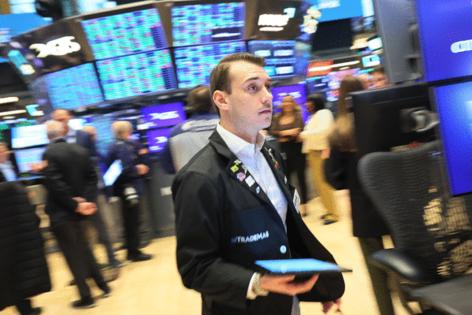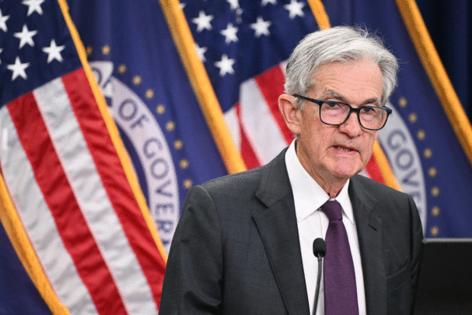Evan Ramstad: Fed should cut interest rates to boost an economy Trump is wrecking
Published in Business News
The Federal Reserve’s policymakers are likely to resume cutting the central bank’s main interest rate, though most analysts think they will only do it by a quarter percentage point.
I think they should act boldly and cut it by a half point.
This makes me sound like President Donald Trump and his acolytes, who want lower interest rates so badly they incessantly criticize important leaders of the Fed, clearly willing to damage the Fed’s independence and the nation’s reputation among global investors to get their way.
But no. The Fed needs to jolt the economy because Trump and his team are the problem. They have badly mismanaged it with their pursuit of tariffs and an indiscriminate crackdown on immigration.
Even though stock market indices are hitting all-time highs now, Trump’s economic policies created enormous uncertainty with business owners, leaders and consumers. As a result, America’s economic growth has been cut in half this year, unemployment is steadily rising, hiring is frozen, consumer spending is slowing and the housing market is stalled.
Here in Minnesota, economic growth is slower than the nation’s, but unemployment is lower than the nation’s. We’ll get new unemployment data for the state on Thursday, and quarterly data on the state’s economic growth comes at the end of the month.
One problematic sector is farming and food production, which accounts for about one-sixth of Minnesota’s economic output.
The weather has been great this summer here and in much of the nation. Yields are going to be huge for corn and soybeans. The market has been expecting that for months and, consequently, prices for those crops are low.
The bigger problem is that one-fifth of the nation’s agricultural production is exported and, in his zeal to impose tariffs, Trump tore up existing trade agreements with nearly all the countries to which American farmers sell their goods.
South Dakotan Luke Lindberg had been in his new job as under secretary for trade and foreign agricultural affairs for just one day when he sat before the crowd at Farmfest in Morgan, Minn., last month and was grilled by farmers over whether Trump’s team would have new trade deals in place by harvest time.
Even Zippy Duvall, the national president of the right-leaning Farm Bureau, warned farmers at the event: “You’re going to have a big crop out there. It’s going to be difficult with your banker if we don’t have trade deals.”
Even though Trump rails against trade deficits, his trade wars helped create them in agriculture.
The nation’s ag trade balance, which had been in surplus for decades, fell into a deficit in the first Trump administration, returned to surplus in 2020 and 2021 and then plunged back into deficit.
Last year, the U.S. imported $32 billion more in food than we exported. Through August this year, that trade deficit had grown to $47 billion. Last year Chinese buyers had booked orders for at least 12 million tons of American soybeans by early September; this year, they have booked zero. Last week, the Minnesota Star Tribune reported soybean farmers are seeking a bailout.
At Farmfest, Lindberg expressed support for Trump’s trade policies and said the administration was striving to complete deals in August and September. With harvest season coming up, the administration last week said it would simplify its process for making trade deals.
Traditionally, Federal Reserve policymakers decide interest rates by balancing their “dual mandate” to keep inflation around 2% while having as many Americans employed as possible.
But the Fed has been torn this year by the prospect that tariffs will push up inflation, which hasn’t returned yet to 2% from the post-pandemic surge of 2022 and 2023. Fed officials also fear unemployment will rise as businesses hold off on expansions and hiring to cope with tariffs and other uncertainty.
Trump’s administration and the Republican majority in Congress gave businesses a break by extending the 2017 tax cuts with the One Big Beautiful Bill. Investors and business leaders expected that. They didn’t expect the chaotic approach to trade and immigration.
The Fed would be doing the nation a favor by aggressively moving to counteract that chaos, even at the risk of appearing to be doing Trump’s bidding.
That’s why I advocate a half-point cut in interest rates. But even that may not be enough to prevent the country from recession in 2026.
What’s more, the damage from the Trump policies isn’t just short-term.
Last week, the Congressional Budget Office issued a new forecast for the nation’s population growth, saying deaths will exceed births in 2031, two years earlier than it forecast in January. That’s because net immigration this year will drop to 400,000 from 2 million.
Minnesota and other states in the northern part of the U.S. have been on the vanguard of population leveling and decline. Thanks to Trump, the rest of the nation will catch up sooner than previously thought.
———
©2025 StarTribune. Visit at startribune.com. Distributed by Tribune Content Agency, LLC.















Comments